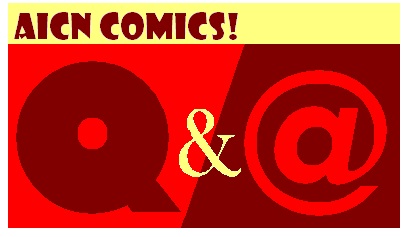
@’s by WAKE THE F—K UP’s Bill Jemas!!!
MATT ADLER (MA): Ok, we're talking with Bill Jemas, former President of Marvel Comics, and writer of the upcoming comic WAKE THE F--- UP. Now, am I saying that right, or do you prefer to pronounce the expletive?
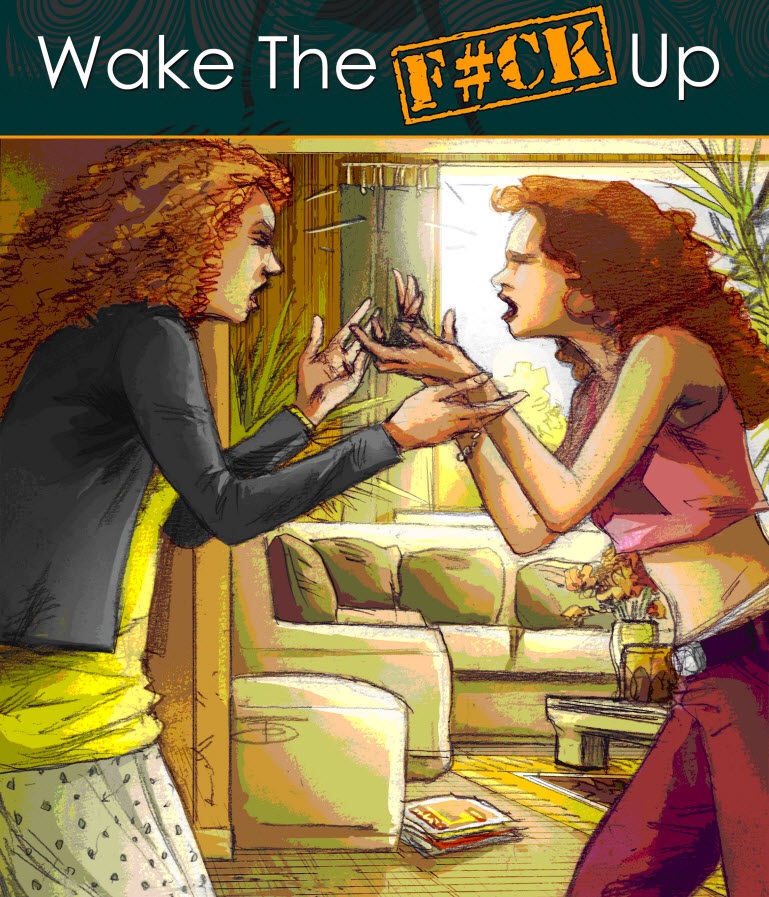 BILL JEMAS (BJ): I like to leave expletives deleted, so “WAKE THE F--- UP” is very good.
BILL JEMAS (BJ): I like to leave expletives deleted, so “WAKE THE F--- UP” is very good.MA: Ok. (laughs) So let me start off with the question on everyone's minds-- what have you been up to since you left Marvel?
BJ: Oh… you would think I would have taken some time off and just hung out at the beach. I didn’t spend nearly enough time at the beach. With some Marvel friends, we started up a company called 360EP, which did a little bit of everything in the merchandising and media land. So we did licensing representation, we developed custom comics and content for companies, did a lot of consulting for big companies and small ones, and just generally had a good run of about 10 years. Made a decent amount of money for salaries for the people we worked with, and then over time it got harder and harder to be a small licensing agency in a big licensing world. So then about 2 years ago, we shut 360 down, found everybody jobs, and I took a position as a board member of Alloy Media & Marketing; we’re actually right here at Alloy Media & Marketing right now! And Alloy Media & Marketing is famous for a lot of things; mostly we own and run a fairly large digital network, 73 million strong, mostly young adult woman, but a decent number of young adult men. So I’m working with the Alloy guys now.
MA: From your perspective as a former President of Marvel, I want to ask you a bit about what's going on in the comic industry right now. First off, have you kept up at all with what Marvel's been doing since you left?
BJ: To some extent. I mean, I’m a big Mark Millar and Brian Bendis fan, so when Mark was really active with them, I read a lot of his Civil War stuff and I read as much of Brian’s stuff as I can. And then when there’s an announcement, like everybody else, I follow it to see what they’re doing, and I get to the movies with my kids. So, by and large, I do try to keep up with the personal relationships and with some of the business things that they’re doing.
MA: Are you impressed with what they’ve been doing with the movies?
BJ: Oh, it’s wonderful. It’s absolutely wonderful. You know, it was the dream at the time to control our own destiny with respect to the movies, and to make some money. There was plenty of coverage of this in the financial news at the time, but the X-Men was a spectacular movie success both in terms of the movie itself and the DVD, and then it was a financial disaster for us—we didn’t sell any additional comic books, we took a bath on toys, the licensing program failed, and it was just really difficult. We learned our lesson, and did a much better job on Spider-Man and the Hulk, and to some extent Daredevil and Punisher, in terms of getting things organized, so merchandising and media worked together, and the comic books got a shot in the arm. But by and large, we were always either at odds, or struggling to stay on the same page with the movie studio. So the idea that the company got their own fund going, and is able to control its own destiny, and do so well, is just a spectacular achievement.
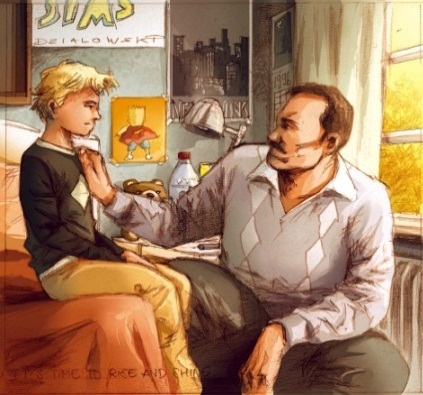 MA: You were really close partners with Joe Quesada during your time at Marvel—I remember “Bill and Joe’s Excellent Adventure”—
MA: You were really close partners with Joe Quesada during your time at Marvel—I remember “Bill and Joe’s Excellent Adventure”—BJ: (laughs)
MA: Do you guys still keep in touch?
BJ: Not as much as we should. But from time to time, we’ll write a note, or see each other at a convention.
MA: Their Distinguished Competition has also had some major changes—are you aware of what’s going on over there at all?
BJ: I did take a close look at the relaunch, and thought they did a wonderful job. Talented people writing very, very good books.
MA: So, what would say you’re most proud of that you accomplished during your time at Marvel?
BJ: It was fairly diverse; and I guess the part that I’m proud of is the part that goes to my particular skill set, which is to get lots of cats all herding in the same direction. So what we were able to do sort of all at once, the first time Marvel was ever able to do this, was help the comic books work with the merchandising program, work with the movie development, work with the sponsor sales, to get all of the elements of the business rolling together in the same direction. And then when we were able to do that, we had this concentration of strengths. The best example is the Ultimates program, where we developed content for teens in the comics, that was reused by hundreds of licensees, and those licensees, from computers to T-shirts to toys, took reprinted copies of the comic books and handed out 10 million units. And then we had a digital program online to get those books out for free, and then all those licensees advertised online to help support the online program. We locked step with Sony on getting the content [for Spider-Man] out there just as the movie was hitting. So we were just able to do so many things together at the same time, and that’s awfully difficult to do in a corporate environment, where your best friend who works across the hall from is sort of your co-worker and your competitor. So we were really able to get lots of different people on the same page, pulling in the same direction. And the results were absolutely spectacular. Like I said, the X-Men movie was an unqualified artistic and box office hit, and then a complete financial disaster [for Marvel], and the Spider-Man movie an unqualified box office hit, and it was spectacularly successful financially. And that just really came from a team of rivals pulling all in the same direction. And I’m proud to say I was a big part of getting my three departments to pull the oars in the same direction.
MA:Now, correct me if I'm wrong, but before you came to Marvel, you didn't have too much of a background in comics. So what’s motivated you to stay involved with them since your departure?
 BJ: I haven’t stayed involved as much as I thought I was going to. I took a couple of stabs at comics over the past 10 years, and just didn’t like the way they were coming out. But in terms of the background, I was at Marvel twice, so the career was sort of National Basketball Association, and then a subsidiary of Marvel called Fleer. Remember Dubble Bubble bubble gum?
BJ: I haven’t stayed involved as much as I thought I was going to. I took a couple of stabs at comics over the past 10 years, and just didn’t like the way they were coming out. But in terms of the background, I was at Marvel twice, so the career was sort of National Basketball Association, and then a subsidiary of Marvel called Fleer. Remember Dubble Bubble bubble gum?MA: And the cards, yep.
BJ: Yeah, the cards. My group ran the Marvel trading card business. And that was a spectacular up elevator, we went from $10 million a year in sales to over $100 million a year in sales in just a couple of years. So I got sort of knee deep in the characters, and really in bringing in fresh artistic looks at somewhat stodgy old characters. So we did a lot of really good artistic work at Fleer, and I kind of got the comic book bug then. And now, I just like what you can do with comics. It’s an area that’s accepting of wide open creative, it’s easy to fail without spending a tremendous amount of money or wasting a tremendous amount of time, and if you fail long enough, ultimately a success shows up. So I like the way the business works in terms of the relatively small amounts of mental energy and capital that you have to spend to get pretty good work out, and I like the way the marketplace judges what’s good and what’s bad. I think the marketplace is a wonderful indicator of how things will do in the mass market.
MA: You're noted for co-creating Ultimate Spider-Man, Wolverine: Origin, as well as your own original works such as Marville. How has your writing evolved since those early efforts?
BJ: You know, it’s funny; it’s that word “writer”. I mean, you can kind of tell from listening to me on the phone that I’m not particularly verbal. So I kind of get the idea, and do my best to scratch out an outline, and then if I’m really lucky, I’ll find an artist who can sort of understand the ideas, and translate them into pictures for a writer, like a Brian Bendis, who can take the ideas and structures and move them to the next level. So I would say post-Marvel, I’ve gotten away, as much as I can, from actually writing any words, so most of what I do now is sort of do silent, scene-by-scene comics, work on them with an artist, the artist will do the comics a panel at a time, and you’ll see, as you see more of what we do in the future, we’re doing these digital storyboards that feed one panel at a time, and mostly they’re silent panels, and then when the silent story’s done, then it’s kind of fun to work with a dialogue writer who can come in and flesh out the story and the characters with good dialogue.
MA: Let’s turn to the book that you’re currently working on. How did you come up with the idea for WAKE THE F--- UP?
BJ: I was a big Go The F--- well, actually, they’re GO THE FUCK TO SLEEP. I was a big GO THE FUCK TO CLEEP fan. I loved the Samuel L. Jackson video, I liked the book, I liked the attitude, that desperate parent trying to get their kid to sleep. But I’m kind of a teen guy, both in terms of my attitude towards life, and in terms of how I’ve spent my business career, and the teen issue is different. The teen issue is not about going to sleep, it’s about waking up and getting out the door. So this book just came out of my head in, I don’t know, a couple of hours. And then I worked with a really good artist, J.J. Dzialowski, to do the panels, and then from the panels I scratched out a poem as best as I could. And that’s the first chunk of the book. And then a really good visual and music artist, who likes to be known as Kilgore Trafalgamore, did the online video. And the second half of the story, which is not online, which is a little bit of a surprise—the dialogue was written a little bit by me, but mostly by a writer in California named Eric Dietel.
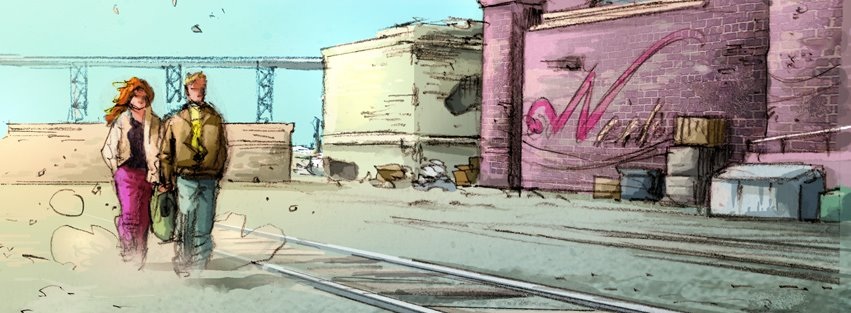 MA: Did you draw any inspiration from your own personal experiences for this book?
MA: Did you draw any inspiration from your own personal experiences for this book?BJ: Oh, that’s a good question. I wouldn’t say personal experiences so much as personal obsessions. I worry a lot about the world that my generation is leaving for the next generation. Mine is the first generation to leave a significantly worse prospect for our children. My parents left a better world for me than they had, and their parents left a better one for them then they had, and I just don’t like what we’ve done. I don’t like the picture we’ve painted for our children, both in terms of what’s out the door right now, and what’s coming down the pike. So there’s an obsession with, let’s wake the f--- up, and do what we can to present a clearer picture of what’s wrong right now, and some beautiful images of what could happen in the future. So, obsessions… kids’ outside activities are at the lowest in history; 10-15 minutes a day. Horrible for health— horrible for mental health, horrible for physical health-- bad habits that will last a lifetime, unless you do something spectacular to break it. The book is a little bit about that. Youth unemployment is at its highest since World War II. It’s horrible not being employed when you’re a kid; it turns you into a not very good worker when you’re an adult. So there’s so many things wrong with the teen world—there’s plenty that’s nice about the teen world, but there’s things that are crucially wrong about the teen world, and part of “Wake The F--- Up” is to draw a little bit of attention on that in a fairly humorous way. I think people will be more likely to pay attention to problems if you give them a little sugar with that. Jon Stewart and Stephen Colbert have proved that. And the rest of the story that we’ll be writing over the next year or so, the goal is to present pictures of a brighter future, which is something I don’t think the comic book world does particularly well, something that the mass media doesn’t do particularly well. It’s fun to create an apocalyptic vision, with a lot of high tech and low tech weaponry, but it’s more difficult to present a brighter future that is somewhat realistic.
MA: So how did you wind up hooking up with Zenescope for this book?
BJ: Oh, I’m a big Zenescope fan. I’ve been a Zenescope fan from the first time I saw their booth at a convention. I love the visuals of their books, I like Joe Brusha’s storytelling, they have guy there named Raven who’s just a wonderful writer. So I’m a Zenescope fan from a creative point of view. And I also love what they do in the custom and licensed comic book world. I don’t know if you had the chance to read their Shark Week, a wonderful Shark Week book. So I like the guys, I’ve always rooted for them to succeed. When this book came out, it could have come out either as a storybook—and I was talking to a traditional publisher about that—or as comic book. So I called Joe, we talked about it a little bit, he said he was happy to work with me, I was thrilled to work with him, so I went down there, almost to Philadelphia, and we cut the deal and started the publishing process.
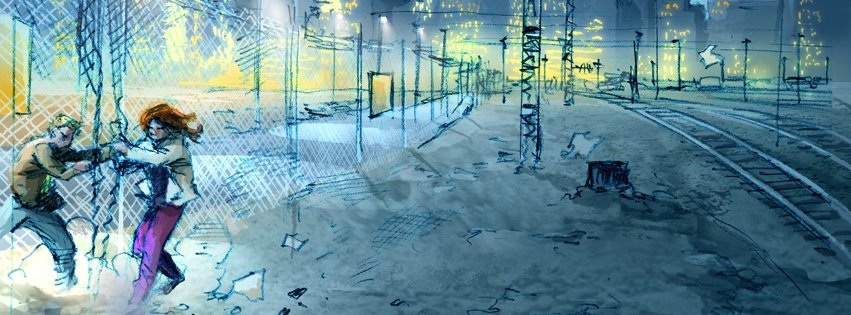 MA:You mentioned your artist, J.J. Dzialowski, and I remember back in the day, you had a forum on Joe Quesada’s message board. And I remember that J.J. was first trying to break into the U.S. comics industry on those boards; is that where you first discovered him?
MA:You mentioned your artist, J.J. Dzialowski, and I remember back in the day, you had a forum on Joe Quesada’s message board. And I remember that J.J. was first trying to break into the U.S. comics industry on those boards; is that where you first discovered him?BJ: How do you remember that?!
MA: I was a moderator on those boards!
BJ: Ohhh, I did not know that! There you go! And actually… this is horrible… didn’t I do a column for Ain’t It Cool News?
MA: I think you may have, way back.
BJ: I did something called “Don’t Ask” for somebody, which was my sense of humor, because people were asking me questions, and the column is called “Don’t Ask”. I actually do not remember J.J. from that… when I was running that company that I mentioned, 360EP, when we needed artwork for one of our clients, we had a handful of artists that we spoke with and worked with, so J.J. came to us through that recruiting process. So now that you’re putting the pieces together, he probably found us from his familiarity with me through the forum.
MA: So what’s it like working with him?
BJ: Wonderful. He is not afraid to take his best shot, and he’s not at all reluctant or hesitant to do revisions. So he has a pretty good sense of reading between the lines in terms of the scripts that I write, which are, you know, not so good. And when I screw something up and send him in the wrong direction, he, with a smile, fairly quickly turns around and does the revision. So he and I are working on this project, and we have a couple of more things coming down the pike that we’ll be able to show you soon.
MA: Now do you have any plans for a follow-up, or is this purely a standalone work?
BJ: Right now, it’s a standalone work; we have a lot of comic book work, let’s call it digital storyboard work, in development under an umbrella called Transverse Universe. And as the work gets better— and the stories are okay now, I’m not embarrassed by them, I think some of them are fun, they have beautiful imagery, but they’re not really complete stories yet. When they turn into complete stories, we’ll publish them a little bit at a time, first digitally, and then if Zenescope wants them, we’ll publish them through Zenescope.
MA: Are you working on any other comics?
BJ: Yes, the Transverse Universe has half a dozen comics that are in progress as we speak.
MA: Ok, but are you writing them, or just overseeing them, or…?
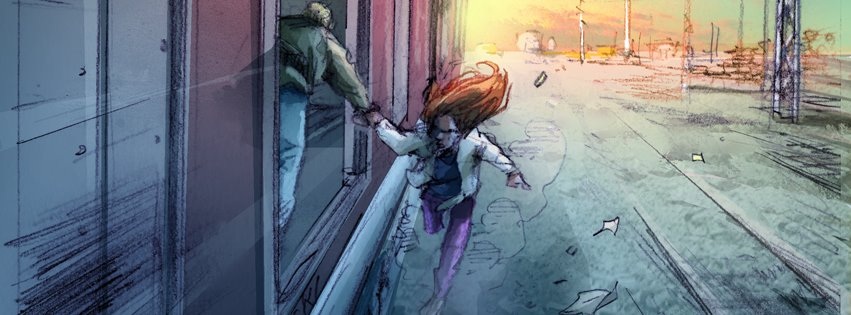 BJ: Basically, I do pretty much what I did at Marvel, which is identify an area where I think teens would be interested in reading. One of the comics is about the Occupy movement, another one is set in a future, a sort of brighter future world, and I’ll sort of lay out a series of scenes. J.J. will draw the scenes, or another artist will draw the scenes, and then we’ll look for a writer to write the dialogue.
BJ: Basically, I do pretty much what I did at Marvel, which is identify an area where I think teens would be interested in reading. One of the comics is about the Occupy movement, another one is set in a future, a sort of brighter future world, and I’ll sort of lay out a series of scenes. J.J. will draw the scenes, or another artist will draw the scenes, and then we’ll look for a writer to write the dialogue.MA: Ok. Well, that’s all the questions I’ve got for you, but I really want to thank you for taking the time to talk with me, and people should be sure to check out WAKE THE F--K UP! on sale in October.
BJ: Thank you! And Matt, now that I’m looking at your name in print, I do remember you as the moderator of those boards!
MA: (laughs) Yeah, way back in the day. Those were fun days.
BJ: Those WERE fun days. So why isn’t it as much fun now? I mean, there just doesn’t seem to be the message board “brawls”…
MA: Yeah, you know, I’ve thought about that a lot, and I think a big part of it is the move to blogs, which I think are less interactive, if you know what I mean?
BJ: Ohhh… that’s a very good point.
MA:But yeah, those were… it was almost like the Wild West, anyone could ask any question, and you were always game to take any question, and I really appreciated that back then too.
BJ: Matt, thank you very much… you know, what you guys had, and Newsarama had, is you had a critical mass of lots and lots of people who wanted to express their opinions, and would do it through you, as opposed to taking themselves and their friends off to their own blogs.
MA:Yup. Alright, well, thank you so much, and hopefully we can do this again some time.
BJ: Thank you!
MA: Finally, here's a preview of the book!
Matt Adler is a writer/journalist, currently writing for AICN among other outlets. He’s been reading comics for 20 years, writing about them for 7, and spends way, way, too much time thinking about them, which means he really has no choice but to figure out how to make a living out of them. He welcomes all feedback.
Proofs, co-edits & common sense provided by Sleazy G
